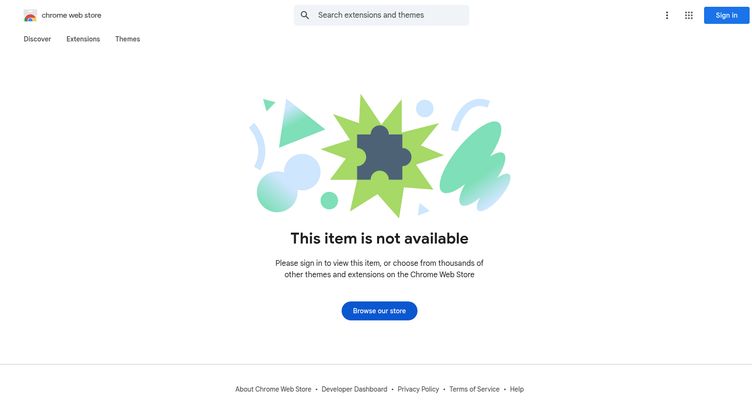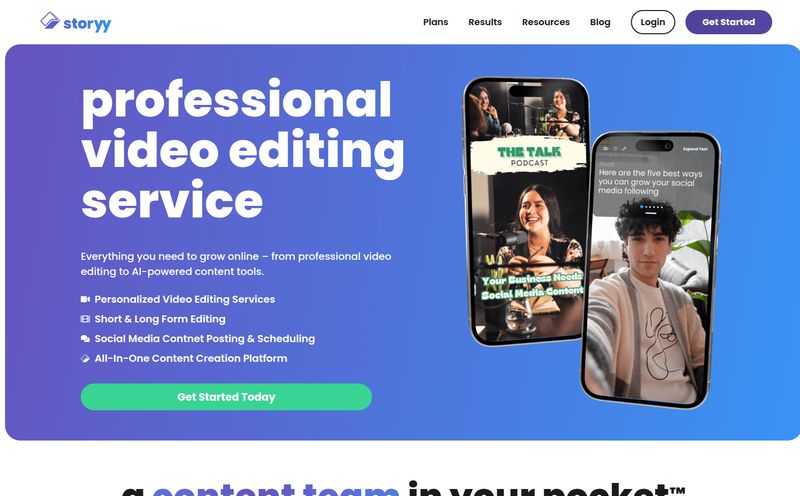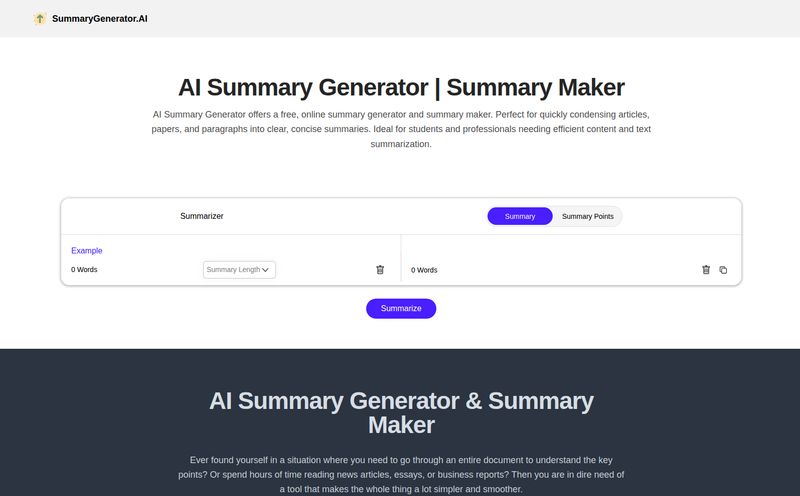If you're in the content game, you're on a treadmill. A hamster wheel. Whatever you want to call it, the demand is relentless. You create an amazing YouTube video or a killer podcast episode, and the celebration lasts for about five minutes before the dread sets in: now you have to chop it up for TikTok, write a blog post about it, create a LinkedIn summary, pull quotes for X (I still want to call it Twitter), and on and on. It's exhausting.
For years, the solution was just... more people. More junior editors. More social media managers. More caffeine. So when I first heard about Framedrop, another AI tool promising to automate media production, my seasoned-SEO-blogger senses started tingling with a familiar mix of hope and deep, deep skepticism. We've all seen tools that promise the world and deliver a slightly misshapen continent, right?
But this one felt a bit different. It wasn't just another AI writer; it was pitched as a full-on production assistant. An AI that could actually understand your content and repurpose it intelligently. So I decided to take a closer look. Is this the real deal or just more AI hype?
So, What Exactly is Framedrop?
In the simplest terms, Framedrop is an AI-powered engine designed to automate content repurposing. Think of it less as a single tool and more as a new member of your content team. One who doesn't need coffee breaks and can watch a two-hour video in about 30 seconds. Its core mission is to take one big piece of content—like a video or podcast—and slice, dice, and rewrite it into a dozen different formats for all the platforms you need to be on.
It’s built for content teams at media companies, agencies, and brands who are buried under the sheer volume of production work. It’s not for the casual blogger. This is the heavy machinery designed to make content operations scalable.

Visit Framedrop
The Core Features That Actually Matter
A lot of SaaS platforms throw a laundry list of features at you. Most are fluff. With Framedrop, I found a few that genuinely made me sit up and pay attention. These are the ones that could actually change a team's entire content workflow.
AI-Powered Video Clipping and Highlights
This is the first big one. If you've ever had to manually scrub through an hour-long webinar to find those two or three "golden nuggets" perfect for a short clip, you know the pain. It’s tedious, soul-crushing work. Framedrop’s AI automates this, identifying the most engaging or important moments in your video and clipping them for you. It's not just looking for audio spikes; it's trying to understand the context to find legitimately valuable segments. A huge time-saver.
The Magic of Video to Article Conversion
Okay, this is where my SEO brain got really excited. Framedrop can take a video and convert it into a fully-fledged, SEO-optimized article. This is the holy grail for so many creators. It’s not just a transcript; the AI restructures the content into a readable blog format, with headings, paragraphs, and even keyword considerations. Of course, the output isn't perfect—you'll still need a human editor to give it a final polish and add some brand voice—but it gets you 80-90% of the way there in a fraction of the time. This feature alone could fundamentally change how video-first creators approach their SEO strategy.
Customizable AI and CMS Integration
Here’s what seperates the professional tools from the consumer toys. Framedrop isn't a closed black box. You can work with them to customize their AI models to better understand your specific type of content, your industry jargon, and your style. That's powerful. Plus, it integrates directly with your existing Content Management System (CMS). Imagine the AI creating a blog post and saving it as a draft directly in your WordPress or Ghost site. That's not just automation; that's a streamlined workflow.
My Experience: The Good, The Bad, and The Complicated
So, does it live up to the hype? Mostly, yes. But with some caveats.
The Upsides: Where Framedrop Is a Beast
The biggest pro is the sheer amount of time and resources it saves. I could see this tool saving a mid-sized content team 15-20 hours of manual work per week, easily. That's half a person! The ability to feed it one piece of content and get back a blog draft, multiple social media clips, and text posts is just... chef's kiss. It lets your team focus on strategy and creativity instead of monotonous production tasks. The SEO potential from the video-to-article feature is also massive, helping you rank for terms you might have otherwise ignored because you didn't have the bandwidth to write the content.
A Few Stumbling Blocks
It's not all sunshine and automated rainbows. This is an enterprise-level platform, and it requires integration. You can't just sign up with a credit card and start uploading videos in five minutes. It needs to be woven into your existing content pipeline, which requires some technical setup and planning. Also, the effectiveness of the whole system hinges on the quality of the AI models. If your source content is low-quality or your niche is extremely obscure, the AI might struggle. You can't fire your human editors—you just empower them to work faster and smarter.
Let's Talk Money: The Framedrop Pricing Mystery
Ah, my favorite part of any B2B software review: the pricing page. Or, in Framedrop's case, the lack of one. Like many high-end SaaS platforms, they use the classic “Contact Us for a Demo” model.
Let's read between the lines. This means two things:
- It’s not cheap. This pricing structure is reserved for tools with a high price tag, typically sold on annual contracts.
- It’s customized. The price will likely depend on your content volume, the number of users, and the level of AI customization you need.
I’ve always been a bit wary of this model, as I'm a big fan of transparency. However, for a tool this specialized, it makes a certain kind of sense. You're not just buying software; you're buying a tailored solution and a partnership. Just be prepared for a sales call, not a checkout page.
A Quick Detour: The Case of the Missing Chrome Extension
Being the thorough researcher I am, I went looking for a Framedrop Chrome extension. Many AI tools have one for easy access. I searched the Chrome Web Store, ready to install it and… I hit a brick wall. A plain, unhelpful “This item is not available” page. Weird, right?
At first, I wondered if I'd missed something. Was there an extension that got pulled? Was it in a closed beta? But after digging around, the answer seems simpler: Framedrop isn't a browser extension tool. It's a backend platform. A production hub. You work within its ecosystem or via its CMS integrations, not through a little button in your browser toolbar. This little dead end actually helped clarify its position in the market. It's not a lightweight add-on; it's the engine room.
Who Is Framedrop Really For?
So, who should be booking a demo? This tool is definitely not for everyone.
This is for you if:
- You are a media company, a marketing agency, or a brand with a serious, high-volume content marketing strategy.
- You primarily create long-form video or audio content (podcasts, webinars, interviews, keynotes).
- You have a team that is spending too much time on manual repurposing tasks.
- The cost of those manual hours is higher than the likely cost of a SaaS subscription.
This is probably not for you if:
- You're a solo creator or a small business just getting started with content.
- Your content is mostly text-based already.
- You're looking for a simple, cheap, plug-and-play tool.
Conclusion: Is Framedrop the Future?
I've seen a lot of tools, and very few get me genuinely excited. Framedrop did. It's a powerful, professional-grade platform that tackles a very real, very expensive problem for content teams. It's a specialized piece of machinery designed for scaling content production in a way that just wasn't possible a few years ago.
While the custom pricing and integration requirements mean it's not a fit for everyone, for the right organization, it could be transformative. Tools like Framedrop represent a shift—from seeing AI as a simple writing assistant to using it as a true production partner. It’s about getting off the content treadmill so you can finally have time to think about where you're running.
Frequently Asked Questions (FAQ)
- What is Framedrop AI?
- Framedrop is an AI-powered software platform that helps content teams automate their media production by repurposing long-form content, like videos and podcasts, into multiple formats such as short clips, social media posts, and SEO-optimized articles.
- How much does Framedrop cost?
- Framedrop does not have public pricing. You need to contact their sales team for a demo and a custom quote based on your specific needs, content volume, and team size.
- Does Framedrop replace human editors?
- No, not entirely. In my opinion, it acts more like a powerful assistant. It handles the most tedious 80-90% of the work, but you'll still want a human editor to provide the final polish, check for accuracy, and inject the brand's unique voice.
- What kind of content can Framedrop repurpose?
- It's primarily designed for long-form video and audio content. Think podcasts, interviews, webinars, product demos, and keynote speeches. It then turns that source material into both video and text-based formats.
- Is Framedrop easy to set up?
- It's more involved than a simple app. It requires integration into your existing content workflows and CMS. It’s a professional tool, so you should expect some onboarding and setup time rather than a 5-minute install.
- Is there a Framedrop Chrome Extension?
- No, there does not appear to be a public Framedrop Chrome extension. The platform operates as a backend system that integrates with your content workflow, not as a simple browser add-on.
Reference and Sources
- Framedrop Official Website
- A Guide to Content Repurposing by Search Engine Journal



